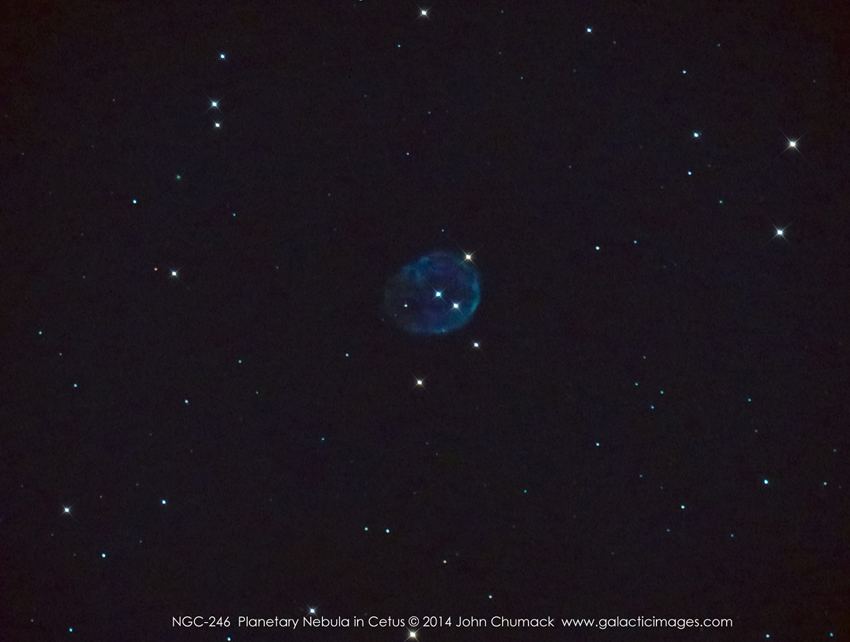NGC-246 A dying star!
This is a Sun like star that has blown off its Outer Atmosphere….
that was discovered by William Herschel in 1785,
NGC-246 is a planetary nebula in the constellation Cetus, also nicknamed the Skull nebula, . It lies approximately 6° north-northeast of the 2nd-magnitude star Beta Ceti and about 1.5° south-southeast of 4.8-magnitude Phi1 Ceti.
The nebula is relatively small and dim (~11th-magnitude). In a small telescope the nebula’s feeble light is almost overpowered by the foreground stars superimposed on it. Larger telescopes show the nebula more clearly, especially with an oxygen III filter.
NGC 246 and it’s central star (a white dwarf) is worth monitoring. In 1930, its photographic magnitude was as bright as 9th magnitude. In 1969 it dipped to 11.2 and today it shines at about 12th magnitude. This star is also is part of a binary pair.
The complex braided structure of NGC 246’s blue outer ring, visible in my 90 second image are caused by high-velocity gases pushing outward from the hot (~200,000 K) central star which contributes to the visible chaos.
Distance is 1600 light years,
4.6 x 4.1 arc-minutes in size,
Visual Magnitude is 10.9
Details: Unmodified Canon 6D DSLR & at the Prime Focus of my Home-Built 16″ Diameter Newtonian Scope,
a single 90 second test exposure, at ISO 3200. No filters
Best Regards,
John Chumack
www.galacticimages.com







